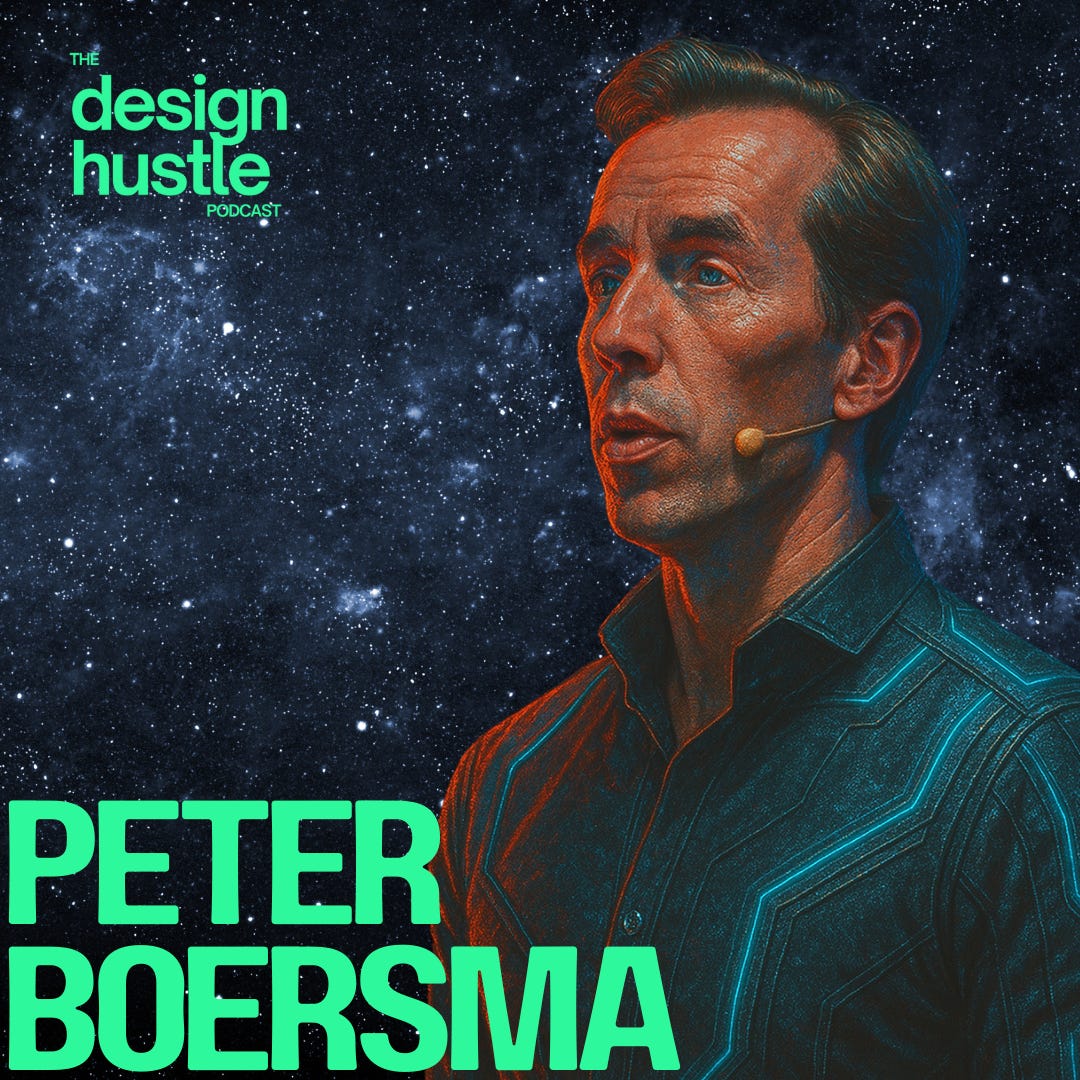Overview
In this conversation, Ali Khan and Peter Boersma explore the multifaceted world of User Experience (UX) design, focusing on Peter's journey from a young computer enthusiast to a UX strategist and design operations consultant. They discuss the evolution of design, the importance of creativity in technology, and the role of design operations in enhancing the effectiveness of design teams.
The conversation also touches on building a design culture, the challenges of consulting in design ops, and the future impact of AI on design processes.
About the guest
Peter Boersma brings over 25 years of experience in creating online, interactive applications, grounded in formal Human Computer Interaction training. His career spans managing design teams and departments, design operations, product management, consulting, and mentoring.
Boersma maintains strong connections within the global design community. His passion for design process and DesignOps is evident in his comprehensive skill set, which includes stakeholder analysis, user research, service design, design strategy, experience design, conceptual design, planning, scoping, prioritizing, navigation design, interaction design, and usability evaluation.
Boersma has developed particular expertise in Design Operations, Design Management, User Experience Design, Information Architecture, Interaction Design, User Interface Design, UX Strategy, Concept Design, Experience Design, User Centered Design, with deep knowledge of industry deliverables, methods, processes, and tools.
LinkedIn https://www.linkedin.com/in/pboersma/
Podcast summary
Introduction to Peter Boersma & Design Ops (00:01 - 01:56)
Peter Boersma, former Design Ops Manager at Miro, shares insights on design operations.
The conversation explores how professionals transition into Design Ops and its growing relevance.
Imposter syndrome is a common hurdle for many aspiring designers reaching out to industry leaders.
Boersma's Background & Entry into UX (02:36 - 07:26)
Initially studied computer science but shifted focus to UX due to interest in human-computer interaction.
Took courses in cognitive science, business, and education to make his studies more user-focused.
Early experiences with Commodore 16 sparked his interest in design and problem-solving.
Creativity & Early Influences (07:59 - 09:56)
Passion for drawing, influenced by his grandfather’s printing business.
Engaged in creative hobbies like sketching, sports, and stage performances.
Believes creativity often starts with physical tools (e.g., pencils, instruments) before transitioning to digital mediums.
Transition to Design Ops (12:25 - 19:03)
Started in software development but gradually moved into process standardization.
Developed best practices for UX teams, improving collaboration and efficiency.
Helped define responsibilities and processes, leading to the emergence of Design Ops as a discipline.
Defining Design Ops & Its Impact (20:57 - 25:53)
Design Ops ensures smooth workflows, defines standards, and enhances collaboration within UX teams.
Junior designers can start implementing Design Ops informally before it becomes a dedicated role.
Coordination, documentation, and advocacy are key aspects of the role.
Challenges of Implementing Design Ops (30:44 - 34:12)
Different industries (startups, Fortune 500s, legacy software) have unique challenges in adopting Design Ops.
Resistance to change, resource allocation, and cultural adaptation can be major obstacles.
Companies often need external consultants to identify and implement Design Ops strategies.
Role of Consultants & Coaching in Design Ops (35:22 - 37:07)
Design Ops consultants help organizations streamline processes and improve UX effectiveness.
Boersma also provides coaching to design teams, assisting in hiring, defining roles, and structuring workflows.
Design Ops takes time to integrate, often requiring 1-2 years for measurable impact.
Encouraging Knowledge Sharing in Design Teams (38:49 - 40:50)
Recommends internal initiatives like book clubs, sharing insights from conferences, and workshops to build team culture.
Encourages open communication and terminology alignment to foster better collaboration.
Future of Design Ops & AI’s Role (42:11 - 44:18)
AI is optimizing design processes but is unlikely to replace the human elements of Design Ops.
Tools may assist in automation, but strategic decision-making and team coordination remain human-led.
Companies like Miro are evolving their approach to Design Ops, adapting to technological advancements.
Discussion takeaways
Imposter syndrome is a common fear when reaching out to experts.
UX is about designing positive experiences for users.
Combining passion with work can lead to fulfilling careers.
The journey from designer to strategist involves learning about business.
Design operations standardize and improve design processes.
Building a design culture is essential for team cohesion.
Consulting in design ops requires understanding organizational needs.
AI will enhance existing design tools and processes.
Design ops roles can start as a mindset rather than a title.
Effective communication is key in design teams.
Links
UXcon Vienna 2023 talk
DesignOps 101 (Nielsen Norman Group) https://www.nngroup.com/articles/design-operations-101/











Share this post